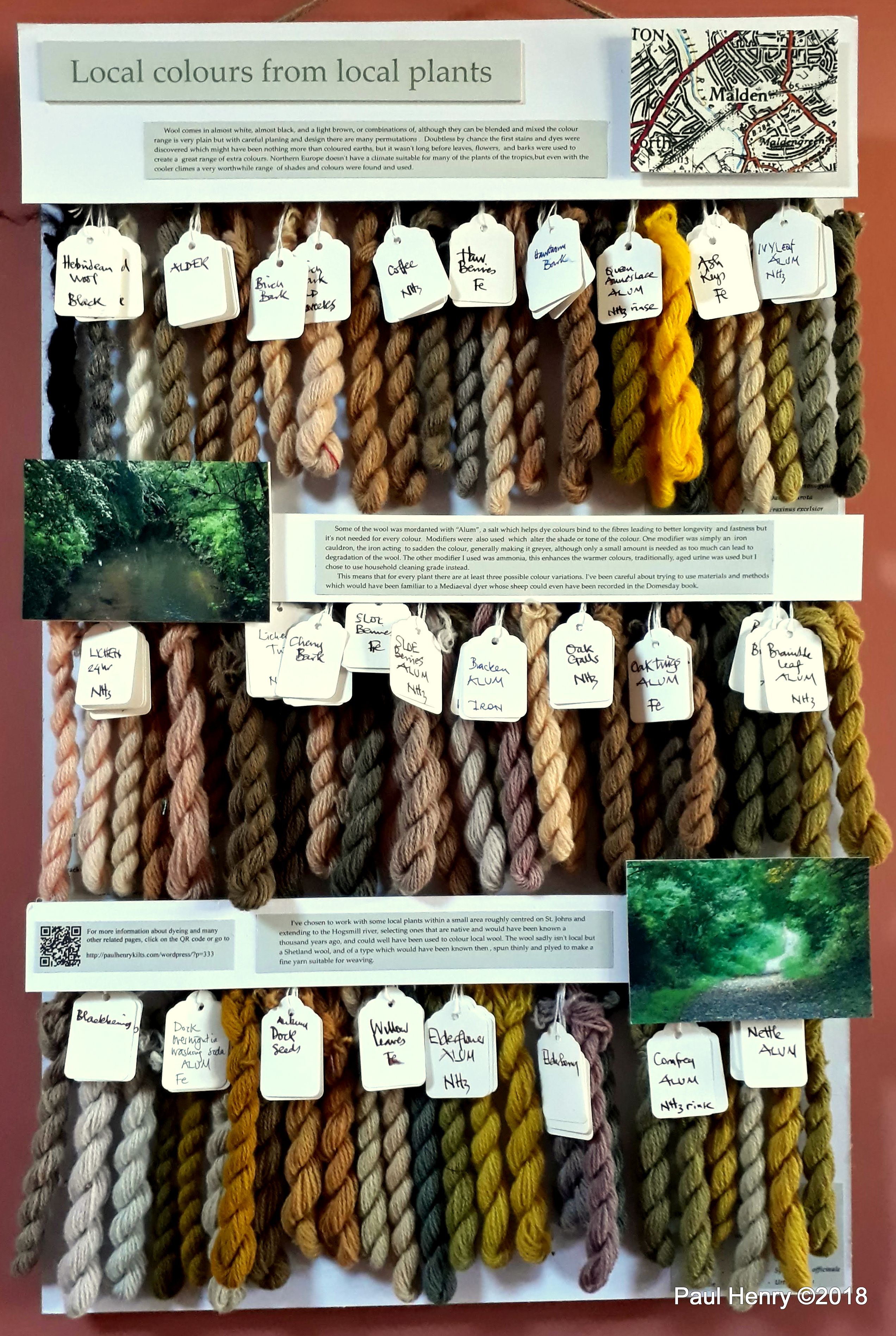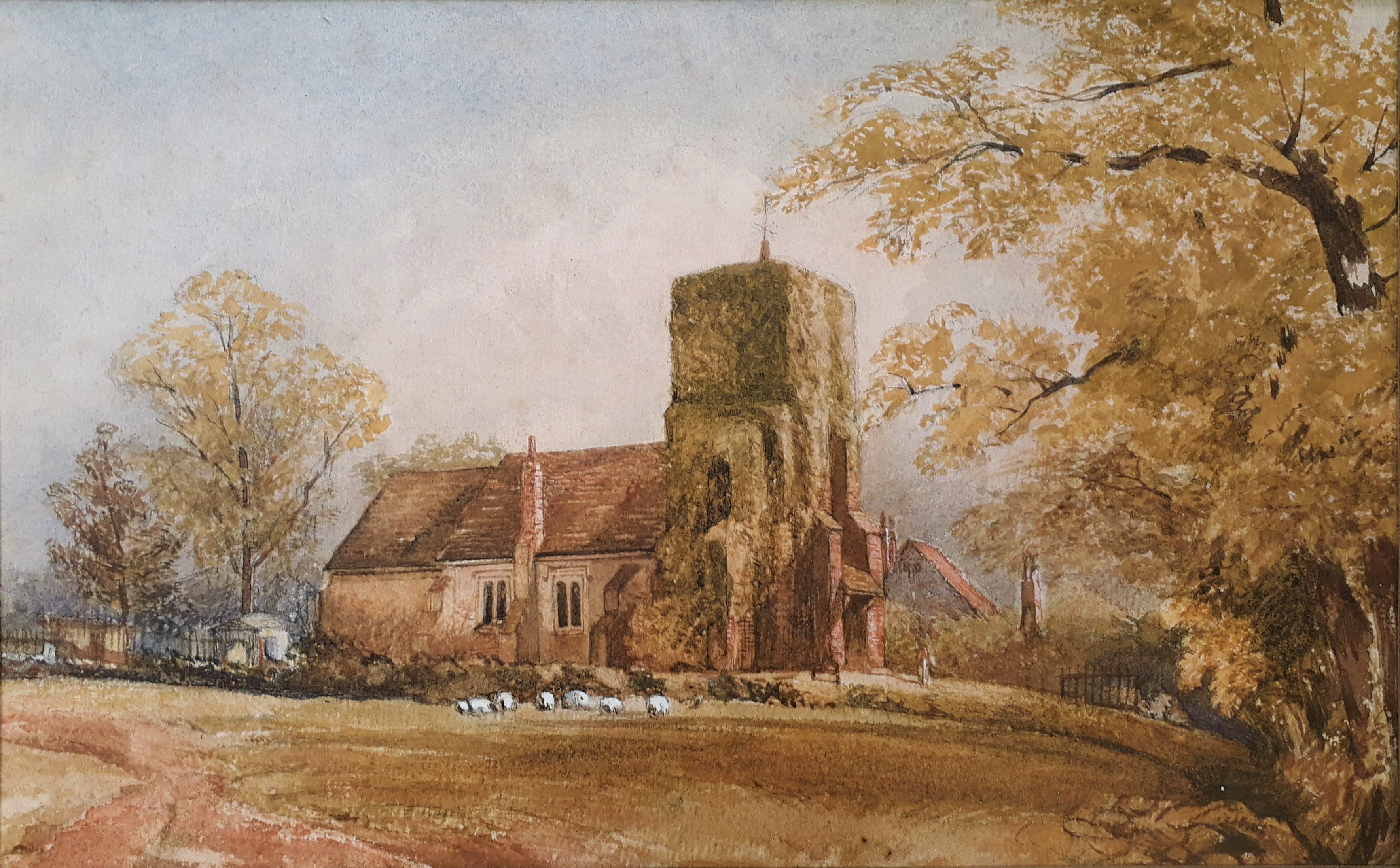Following on from an earlier post about collecting local plants and making dyes with them for a Heritage Open Day, I’ve finished and created a show board

The list of plants used, I chose them because they could have been around 1000 years ago, there were dozens of others, but I have left them in the ground for another time
| Alder | – | bark | – | Alnus |
| Birch | – | bark | – | Betula pendula |
| Coffee | – | seeds | – | Coffea |
| Hawthorn | – | fruit | – | Crataegus monogyna |
| Hawthorn | – | bark | – | Crataegus monogyna |
| Queen Annes Lace | – | flower | – | Daucus carota |
| Ash | – | key | – | Fraxinus excelsior |
| Ivy leaves | – | leaves | – | Hedera Helix |
| Lichen | – | whole | – | Lichen |
| Lichen and twigs | – | whole | – | Lichen |
| Cherry | – | bark | – | Prunus |
| Sloe | – | fruit | – | Prunus spinosa |
| Bracken brown | – | leaves | – | Pteridium |
| Oak | – | galls | – | Quercus |
| Oak | – | wood | – | Quercus |
| Bramble | – | fruit | – | Rubus |
| Bramble | – | leaves | – | Rubus |
| Dock brown | – | seeds | – | Rumex |
| Dock green | – | seeds | – | Rumex |
| Willow | – | leaves | – | Salix |
| Elder | – | fruit | – | Sambucus |
| Elder | – | flower | – | Sambucus |
| Comfrey | – | leaves | – | Symphytum officinale |
| Nettle | – | leaves | – | Urtica dioica |
The blurb for the show board
Wool comes in almost white, almost black, and a light brown, or combinations of, although they can be blended and mixed the colour range is very plain but with careful planing and design there are many permutations . Doubtless by chance the first stains and dyes were discovered which might have been nothing more than coloured earths, but it wasn’t long before leaves, flowers, and barks were used to create a great range of extra colours.
Northern Europe doesn’t have a climate suitable for many of the plants of the tropics,but even with the cooler climes a very worthwhile range of shades and colours were found and used.
I’ve chosen to work with some local plants within a small area roughly centred on St. Johns and extending to the Hogsmill river, selecting ones that are native and would have been known a thousand years ago, and could well have been used to colour local wool. The wool sadly isn’t local but a Shetland wool, and of a type which would have been known then , spun thinly and plyed to make a fine yarn suitable for weaving.
Some of the wool was mordanted with “Alum”, a salt which helps dye colours bind to the fibres leading to better longevity and fastness but it’s not needed for every colour. Modifiers were also used which alter the shade or tone of the colour. One modifier was simply an iron cauldron, the iron acting to sadden the colour, generally making it greyer, although only a small amount is needed as too much can lead to degradation of the wool. The other modifier I used was ammonia, this enhances the warmer colours, traditionally, aged urine was used but I chose to use household cleaning grade instead.
This means that for every plant there are at least three possible colour variations. I’ve been careful about trying to use materials and methods which would have been familiar to a Mediaeval dyer whose sheep could even have been recorded in the Domesday book.
And I must add the watercolour painting that I first saw last year in the display at the Church which gave me the idea of the dyeing project, just and because I noticed the sheep!


1 thought on “Local colours from local plants”